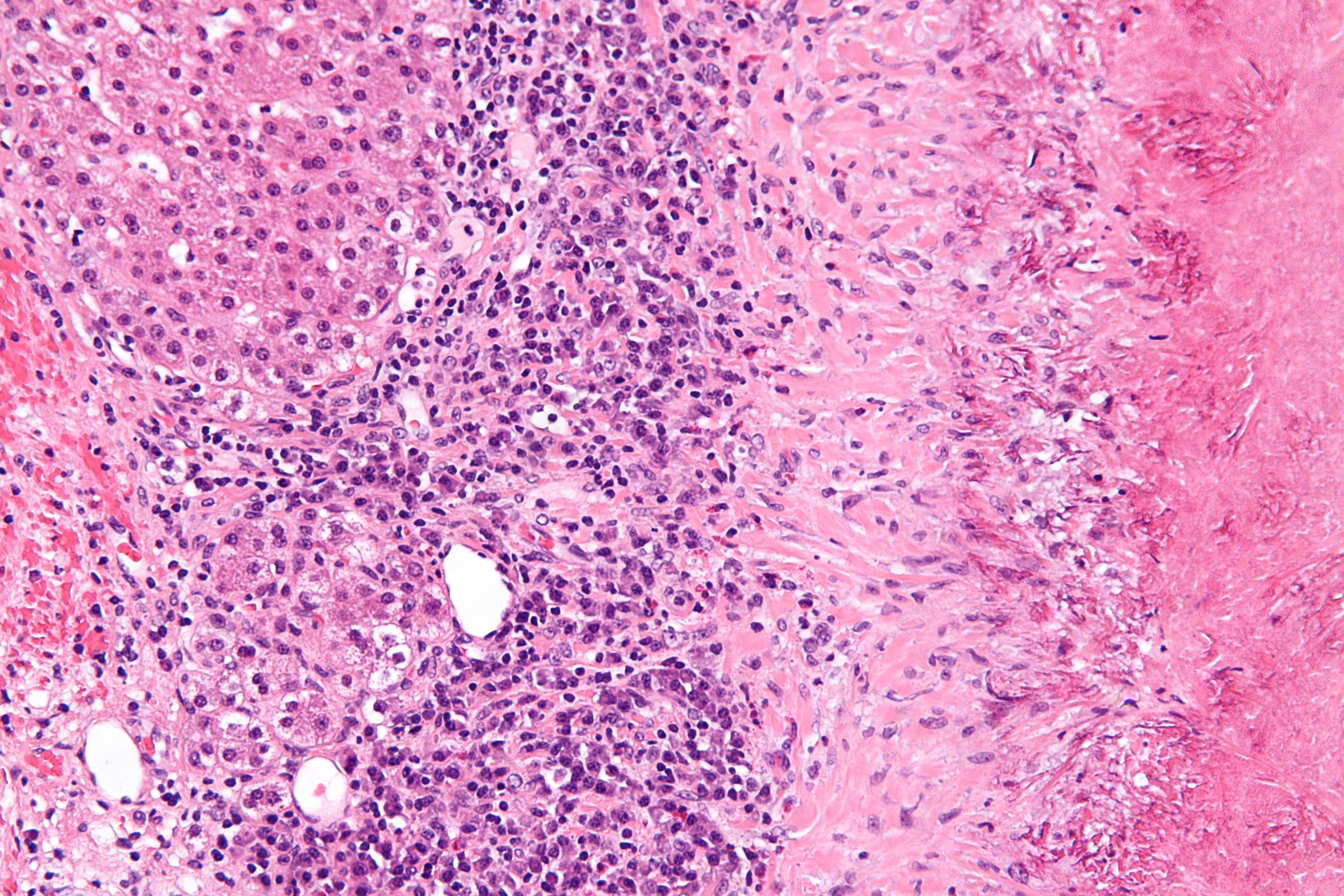Difference between revisions of "Template:Article of the week"
Shawndouglas (talk | contribs) (Added content) |
Shawndouglas (talk | contribs) (Updated article of the week text.) |
||
| Line 1: | Line 1: | ||
<div style="float: left; margin: 0.5em 0.9em 0.4em 0em;">[[File: | <div style="float: left; margin: 0.5em 0.9em 0.4em 0em;">[[File:Liver cyst wall - high mag.jpg|220px]]</div> | ||
'''[[ | '''[[Histopathology]]''' is a branch of histology and pathology that studies and diagnoses diseases on the tissue and cellular level. While histopathology is closely related to [[cytopathology]], the main difference is diagnostic information gained from histopathology is acquired from solid tissue samples, whereas specific disaggregated cell preparations are used in cytopathology. Typically a biopsy or surgical specimen is examined by a pathologist after the specimen has been processed and histological sections have been placed onto glass slides. Testing typically incorporates several stages, from collection and preparation using numerous methods (depending on the sample and test type) down to examination. | ||
Rudolf Ludwig Karl Virchow is considered by many to be one of the fathers of cellular pathology, remembered most for his collection of lectures on the topic, published as ''Cellular Pathology'' in 1858. However, his assistant, David Paul von Hansemann also played an important role in the progress of histopathology during the 1890s, producing his book ''The Microscopic Diagnosis of Malignant Tumours'' and other important research. ('''[[Histopathology|Full article...]]''')<br /> | |||
<br /> | <br /> | ||
''Recently featured'': [[Desktop virtualization]], [[Comprehensive outpatient rehabilitation facility | ''Recently featured'': [[Clinical chemistry]], [[Desktop virtualization]], [[Comprehensive outpatient rehabilitation facility]] | ||
Revision as of 19:10, 29 December 2014
Histopathology is a branch of histology and pathology that studies and diagnoses diseases on the tissue and cellular level. While histopathology is closely related to cytopathology, the main difference is diagnostic information gained from histopathology is acquired from solid tissue samples, whereas specific disaggregated cell preparations are used in cytopathology. Typically a biopsy or surgical specimen is examined by a pathologist after the specimen has been processed and histological sections have been placed onto glass slides. Testing typically incorporates several stages, from collection and preparation using numerous methods (depending on the sample and test type) down to examination.
Rudolf Ludwig Karl Virchow is considered by many to be one of the fathers of cellular pathology, remembered most for his collection of lectures on the topic, published as Cellular Pathology in 1858. However, his assistant, David Paul von Hansemann also played an important role in the progress of histopathology during the 1890s, producing his book The Microscopic Diagnosis of Malignant Tumours and other important research. (Full article...)
Recently featured: Clinical chemistry, Desktop virtualization, Comprehensive outpatient rehabilitation facility










